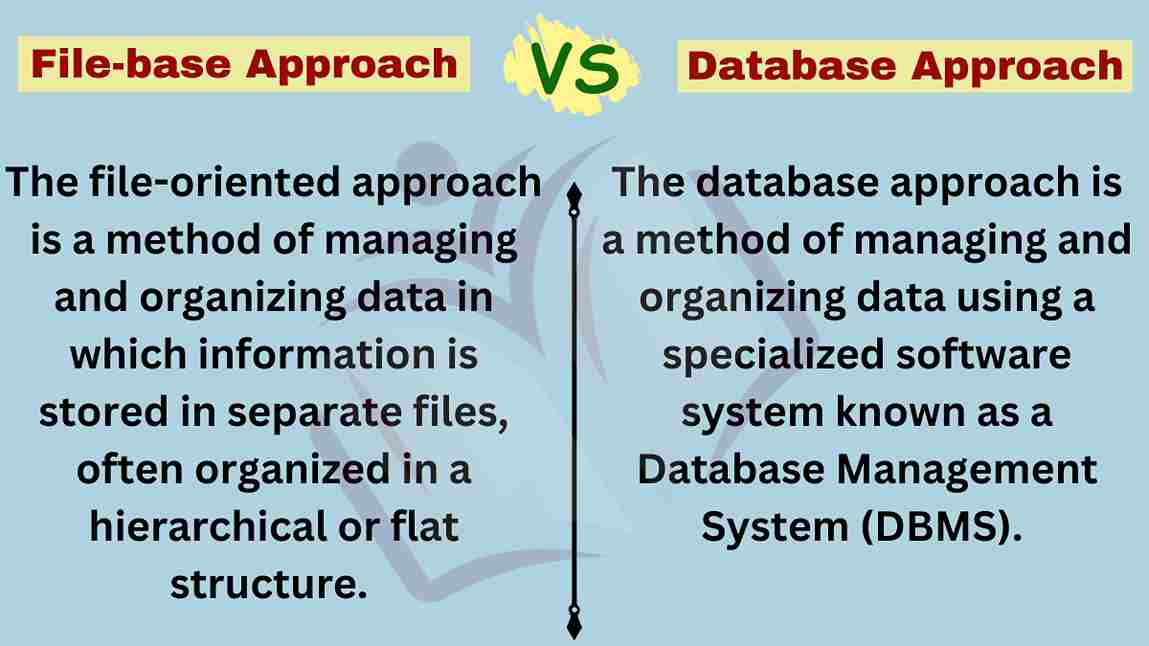The key difference between file based approach and database approach is that in the file-based approach data is stored in separate files, often leading to redundancy, limited sharing, and challenges in maintaining data integrity.
In the database approach data is organized in structured tables within a Database Management System, enabling efficient querying, reduced redundancy, data integrity enforcement, and multi-user data sharing.

In this article, we will discuss the difference between the file base and database approaches and also give deep insight into both of them separately.
What is File-based Approach?
The file-oriented approach is a method of managing and organizing data in which information is stored in separate files, often organized in a hierarchical or flat structure.
Each file typically contains a specific type of data related to a particular application or aspect of the system. In this approach, data is managed directly by the applications themselves, without the use of a centralized system to oversee data storage and retrieval.
What is Database Approach?
The database approach is a method of managing and organizing data using a specialized software system known as a Database Management System (DBMS).
This approach provides a structured and centralized way to store, retrieve, manipulate, and manage large volumes of data efficiently and securely.
The fundamental idea behind the database approach is to create and maintain a single, integrated repository of data that can be shared and accessed by multiple users and applications.
File based Approach vs Database Approach
The main differences between file-based approach and the database approach are given below:
| Aspect | File-Oriented Approach | Database Approach |
| Data Storage | Files stored in a hierarchical or flat structure, often application-specific | Data stored in tables with structured rows and columns |
| Data Redundancy | High potential for data redundancy | Reduced data redundancy through normalization |
| Data Integrity | Challenging to enforce data integrity | Enforced data integrity through constraints and transactions |
| Data Sharing | Limited data sharing between applications | Enables data sharing and collaboration among applications |
| Scalability | Limited scalability for large datasets | Designed for efficient management of large datasets |
| Querying | Limited querying capabilities | Powerful querying using SQL (Structured Query Language) |
| Control and Complexity | Simple implementation and control | More complex setup and management |
| Concurrent Access | Limited support for concurrent access | Supports concurrent access by multiple users |
| Cost | Generally lower initial costs | Higher initial costs due to software and setup |
| Performance | Efficient for small-scale operations | Optimized performance for various operations |
